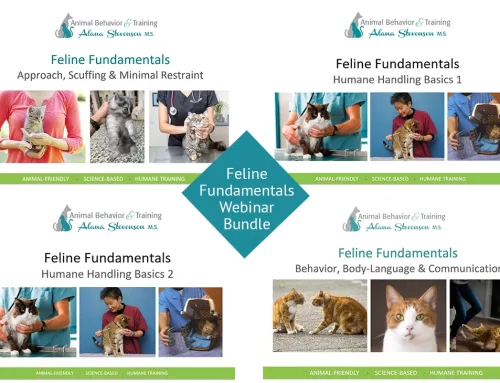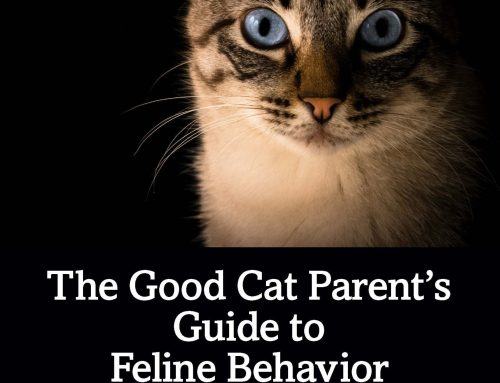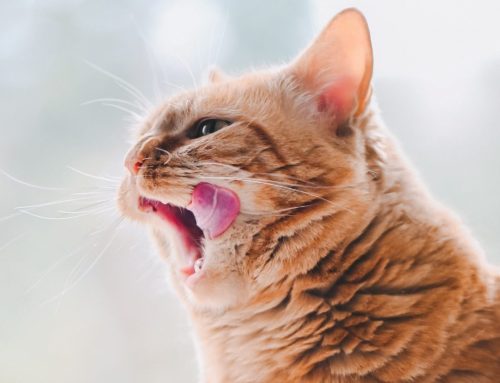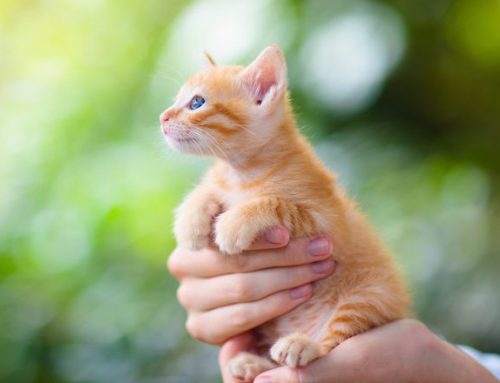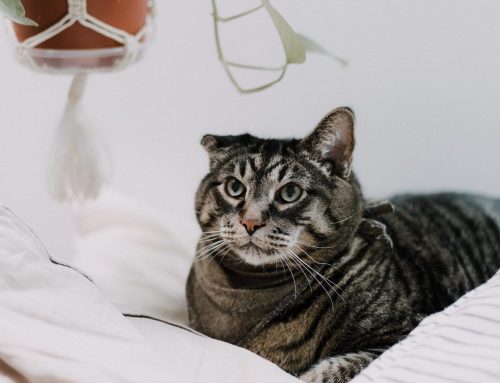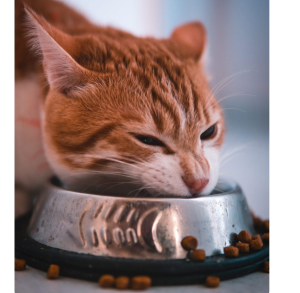 “My cat is always hungry” is a frequent complaint. For the past 15 years, there’s been an ongoing trend for cats to be thin and portion-fed. Veterinary hospital charts show body condition images where “normal” cats keep getting thinner. Some even show visible ribs as “healthy” weight. This has led to an increase in obsessive hunger and eating disorders in cats.
“My cat is always hungry” is a frequent complaint. For the past 15 years, there’s been an ongoing trend for cats to be thin and portion-fed. Veterinary hospital charts show body condition images where “normal” cats keep getting thinner. Some even show visible ribs as “healthy” weight. This has led to an increase in obsessive hunger and eating disorders in cats.
While measured portions and scheduled meals are currently recommended, this approach creates behavioral problems. Hungry cats are stressed cats, and stressed cats aren’t happy cats. Food restriction causes play-biting, play-aggression, inability to settle, excessive crying, counter-surfing, petting aggression, anxiety, and inter-cat aggression. If these problems already exist, “dieting” makes them worse.
Stress Makes Cats Sick
It’s better to have a fat, happy cat than a stressed, skinny one. Traditionally, cats were free-fed. They roamed outside, hunted, explored, then came inside to eat real food—”people” food. With commercial pet food, this shifted to dry food available at-will, allowing cats to nibble whenever they wanted.
Natural Feeding Behavior
Cats are natural predators who eat up to 20 small meals daily. They constantly stalk and search for their next meal—mice, voles, moths, and grasshoppers. Unless sleeping or socially interacting, cats are hunting for food. Without food for more than 48 hours, cats can develop hepatic lipidosis, a serious and potentially fatal condition.
A cat crying for food, being unable to settle, raiding the refrigerator, and grabbing food from your plate isn’t displaying normal feline behavior—it’s stress from hunger. In addition, cats often vomit after eating too quickly and on an empty stomach. Hungry cats tend to vomit more often after eating.
Normal feline behavior involves constantly eating small amounts. Cats eat with every transition: waking up, when you come home, before and after play, and after naps. Well-fed, healthy cats take a few bites and walk away. They may still show interest in your food—hummus, kale, or cold cuts—but won’t be ravenous or keep you awake with anxiety.

The Research Gap
There’s no research proving fat cats have shorter lifespans than thin ones. Much weight focus comes from extrapolating dog and human data to cats. When we keep cats indoors, we remove their ability to stalk and hunt. When we restrict food access, we make these predators completely dependent on us, which creates hunger and anxiety.
Why I Recommend Free-Feeding
I recommend free-feeding for cats’ behavioral health. Cats should have food access at all times. Behavior problems often diminish or disappear entirely with this simple change. There’s a difference between obesity and being fat, plump, or pudgy.
Many experienced cat owners never had problems with previous free-fed cats, but behavior issues emerge when following current “the cat can’t be fat” or “feed less” recommendations.
When Weight Loss Is Necessary
If a cat must lose weight because they’re uncomfortable, can’t groom themselves, or may have trouble jumping and climbing, weight loss should be gradual. This should be done by changing food types (e.g., switching to a low-calorie food), adding play sessions, installing vertical climbing platforms, and enrichment strategies rather than restricting meals or food access.
This issue is further addressed in The Good Cat Parent’s Guide to Feline Behavior Modification under “Food for Thought.”
© 2024 Alana Stevenson, MS

